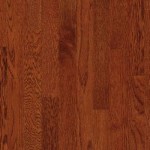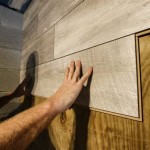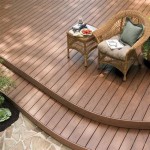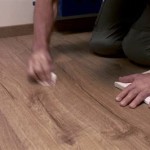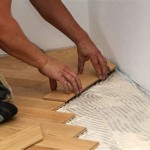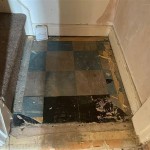Vinyl Wood Look Flooring Cost: A Comprehensive Guide
Vinyl wood look flooring has surged in popularity as a cost-effective and aesthetically pleasing alternative to traditional hardwood. It offers the visual appeal of wood with enhanced durability, water resistance, and ease of maintenance. Understanding the costs associated with this type of flooring is crucial for budgeting and making informed decisions about home renovations or new construction projects.
The overall cost of vinyl wood look flooring is influenced by several factors, including the type of vinyl, the quality and thickness of the material, the complexity of the installation, and geographic location. This article provides a comprehensive overview of the various cost components associated with vinyl wood look flooring, helping readers to develop a realistic budget and plan for their flooring project.
Types of Vinyl Wood Look Flooring and Their Associated Costs
The term "vinyl wood look flooring" encompasses several distinct types, each with its own price point. The primary types include sheet vinyl, vinyl tile, and luxury vinyl plank (LVP). Each type presents different advantages and disadvantages in terms of cost, durability, and installation complexity.
Sheet Vinyl: Sheet vinyl is sold in large rolls and is designed to cover an entire room with a single, seamless piece. This reduces the number of seams and minimizes the risk of water damage. Sheet vinyl is generally the least expensive type of vinyl flooring, with material costs ranging from $1 to $3 per square foot. However, professional installation is often recommended, especially for larger areas or rooms with complex layouts. Installation costs can add an additional $1 to $3 per square foot, bringing the total cost to $2 to $6 per square foot.
Vinyl Tile: Vinyl tile is available in individual squares and offers more design flexibility than sheet vinyl. It is relatively easy to install as a DIY project, potentially saving on labor costs. Vinyl tile is typically priced between $2 and $5 per square foot for the material alone. If professional installation is required, the cost can range from $1 to $4 per square foot, resulting in a total cost of $3 to $9 per square foot.
Luxury Vinyl Plank (LVP): LVP is designed to mimic the look and feel of real hardwood planks. It is typically thicker and more durable than sheet vinyl and standard vinyl tile. LVP comes in various thicknesses and constructions, including click-lock and glue-down options. The cost of LVP materials ranges from $3 to $7 per square foot. Installation costs depend on the chosen installation method and can range from $1 to $5 per square foot, resulting in a total cost of $4 to $12 per square foot. Some higher-end LVP options can exceed these ranges.
The thickness of the wear layer is a critical factor to consider when evaluating LVP. The wear layer is the top surface of the plank that protects the flooring from scratches, dents, and wear. A thicker wear layer provides greater durability and longevity, making it suitable for high-traffic areas. LVP with a thicker wear layer will typically cost more than those with a thinner wear layer.
Factors Influencing the Overall Cost of Vinyl Wood Look Flooring
Beyond the type of vinyl flooring chosen, several other factors can significantly influence the overall cost of the project. Understanding these factors is crucial for accurate budgeting and avoiding unexpected expenses.
Subfloor Preparation: A level and stable subfloor is essential for successful vinyl flooring installation. If the existing subfloor is uneven, damaged, or requires extensive repairs, the cost of the project will increase. Subfloor preparation may involve patching cracks, leveling uneven surfaces, or replacing damaged sections. The cost of subfloor preparation can range from $1 to $5 per square foot, depending on the extent of the work required.
Room Size and Layout: The size of the room and its complexity will impact the amount of material required and the labor involved in the installation. Larger rooms require more material, increasing the material cost. Rooms with complex layouts, such as those with many corners, doorways, or built-in cabinets, will require more cutting and fitting, increasing the labor cost. Complex patterns will also increase the cost.
Installation Method: The chosen installation method will also affect the overall cost. Glue-down installations typically require professional expertise and can be more labor-intensive than click-lock installations. Click-lock installations, on the other hand, are often easier for DIYers, potentially saving on labor costs. However, even with click-lock systems, hiring a professional installer can ensure a more precise and durable installation.
Geographic Location: Labor costs and material prices can vary significantly depending on the geographic location. Areas with higher living costs typically have higher labor rates. Furthermore, the availability of specific vinyl flooring products may also vary, impacting material prices.
Removal and Disposal of Existing Flooring: Removing and disposing of the existing flooring can add to the overall project cost. The cost of removal and disposal will depend on the type of flooring being removed and the local disposal regulations. Some flooring types, such as asbestos-containing tiles, require specialized removal procedures, which can significantly increase the cost.
Additional Materials: In addition to the vinyl flooring itself, other materials may be required, such as underlayment, adhesives, and trim. Underlayment provides cushioning, sound insulation, and moisture protection. Adhesives are necessary for glue-down installations. Trim is used to cover the edges of the flooring and provide a finished look. These additional materials can add to the overall cost of the project.
Furniture Removal and Replacement: Moving furniture out of the room before installation and replacing it afterward can also be a factor to consider. If hiring movers is necessary, this will add to the overall cost. Carefully consider the time commitment and physical effort required to move furniture yourself.
Strategies for Reducing Vinyl Wood Look Flooring Costs
While the cost of vinyl wood look flooring can vary considerably, several strategies can help reduce the overall project expenses. Careful planning, smart shopping, and considering DIY options can all contribute to cost savings.
Compare Prices from Multiple Suppliers: Obtaining quotes from multiple suppliers is crucial for finding the best prices on vinyl flooring materials. Different suppliers may offer different discounts or promotions. Consider both local retailers and online suppliers. Compare prices, warranties, and shipping costs before making a decision.
Consider DIY Installation: If comfortable with home improvement projects, consider installing the vinyl flooring yourself. Click-lock LVP is particularly well-suited for DIY installation. However, be sure to carefully read and follow the manufacturer's instructions. Proper preparation and attention to detail are essential for a successful DIY installation. If unsure, consulting with a professional installer is advisable.
Opt for Simpler Installation Patterns: Complex installation patterns, such as herringbone or diagonal layouts, require more cutting and fitting, increasing the labor cost. Opting for a simpler installation pattern, such as a straight lay, can save on labor expenses.
Prepare the Subfloor Yourself: If the subfloor requires minimal preparation, such as patching small cracks or leveling minor imperfections, consider doing the work yourself. This can save on labor costs. However, for more extensive subfloor repairs, hiring a professional is often recommended.
Look for Sales and Promotions: Many retailers offer sales and promotions on vinyl flooring throughout the year. Keep an eye out for these deals to save money on materials. Consider purchasing materials during off-season periods when demand may be lower.
Choose a Budget-Friendly Vinyl Option: While luxury vinyl plank (LVP) offers superior durability and aesthetics, it is also the most expensive type of vinyl flooring. If budget is a primary concern, consider sheet vinyl or standard vinyl tile. These options can provide a similar look at a lower cost.
Minimize Waste: Carefully measure the room and calculate the amount of material needed to minimize waste. Order slightly more material than needed to account for cuts and mistakes, but avoid over-ordering excessively.
Reuse or Recycle Existing Materials: If possible, reuse existing trim or other materials to save on the cost of purchasing new materials. Alternatively, consider recycling or donating any leftover materials to reduce waste and potentially offset disposal costs.
By carefully considering these strategies, homeowners can significantly reduce the cost of their vinyl wood look flooring project without compromising on quality or aesthetics. Accurate budgeting, diligent research, and thoughtful planning are key to achieving a successful and affordable flooring upgrade.

Cost To Install Vinyl Plank Flooring A Complete Guide For 2024 Forbes Home

Cost To Install Vinyl Floors The Home Depot

Cost To Install Vinyl Floors The Home Depot

Luxury Vinyl Tile And Plank Flooring Installation Costs

Average Cost Of Vinyl Flooring Installation In 2024 Forbes Home

How Much Does It Cost To Install Vinyl Flooring

How Much Does It Cost To Install Vinyl Plank Flooring

Luxury Vinyl Plank Lvp Flooring Cost And Installation Hatcher S Floors

Cost To Install Vinyl Flooring Fixr

Porcelain Wood Look Tile Vs Luxury Vinyl Plank An Honest Comparison
Related Posts

